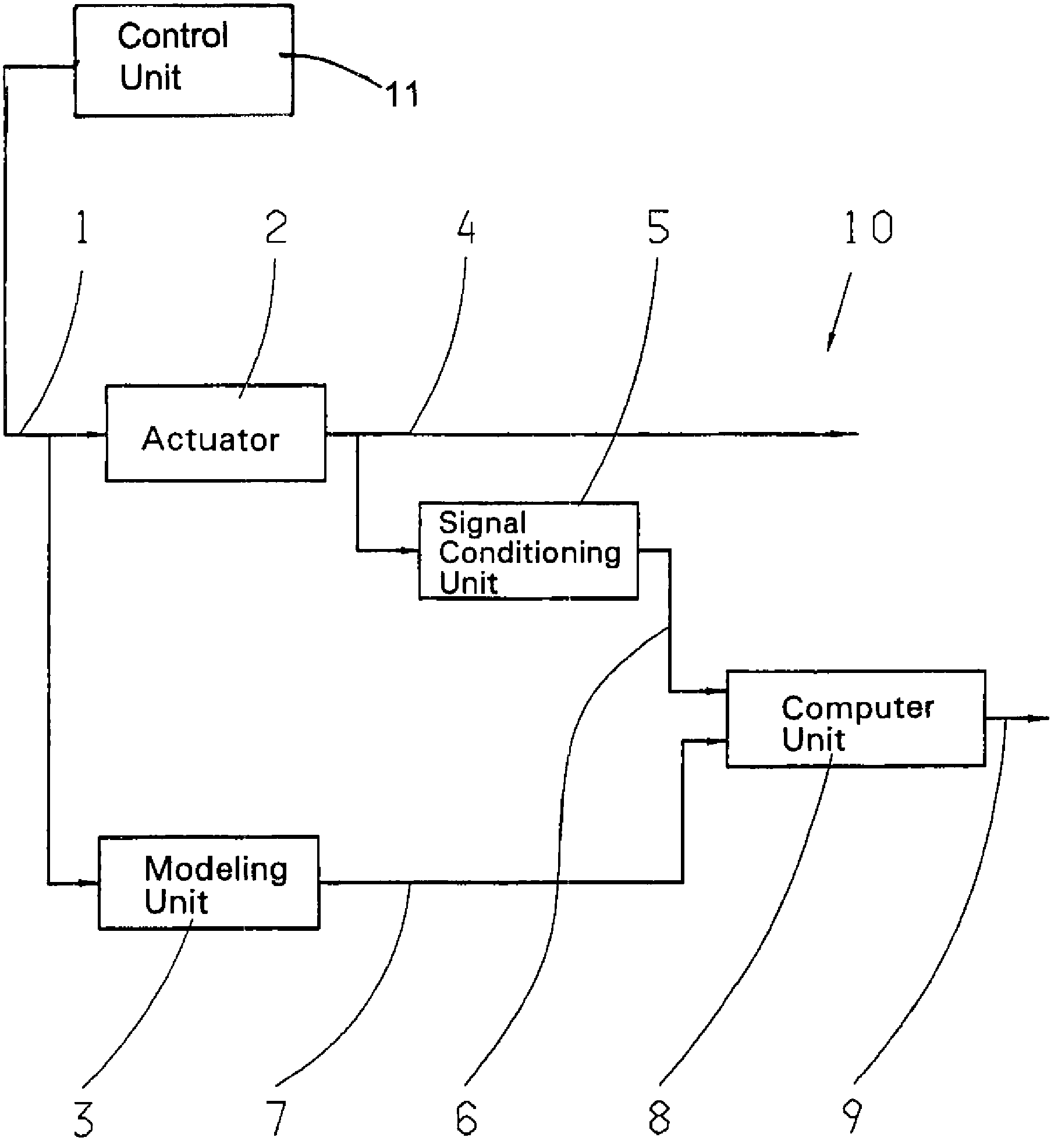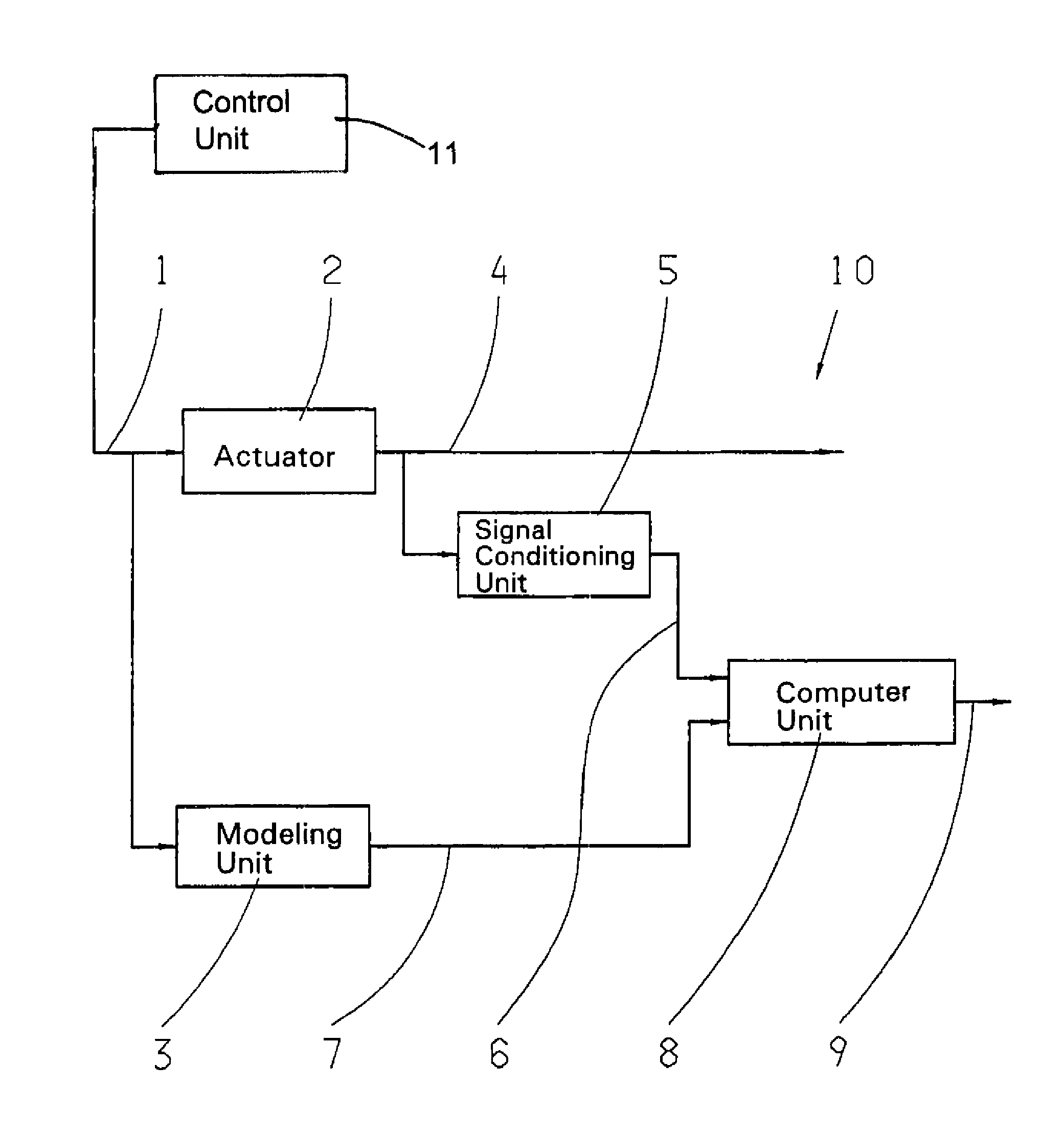Method for fault detection in an actuator
a technology of actuator and fault detection, applied in the direction of program control, instruments, testing/monitoring control systems, etc., can solve problems such as faults in actuators and/or sensors
- Summary
- Abstract
- Description
- Claims
- Application Information
AI Technical Summary
Benefits of technology
Problems solved by technology
Method used
Image
Examples
Embodiment Construction
[0014]In the sole FIGURE, the block diagram 10 comprises an actuator 2, a modeling unit 3, a signal conditioning unit 5 and a computer unit 8. From a control unit 11, for example that of an automatic variable-speed transmission, a control value 1, appropriate for actuating the actuator 2, is sent both to the actuator 2 and to the modeling unit 3. As a function of the control value 1 applied, at an output of the actuator 2, a corresponding electric signal is produced by a sensor. This signal, which represents the measured actuator position 4, is sent to the signal conditioning unit 5. In the signal conditioning unit 5, the position change of the actuator, i.e., the actuator movement, is derived from the position signal of the sensor. At the output of the signal conditioning unit 5, the measured actuator movement 6 is now available. The control value 1 is also sent to the modeling unit 3. As a function of the control value 1 supplied, in the modeling unit 3, an expected actuator movem...
PUM
 Login to View More
Login to View More Abstract
Description
Claims
Application Information
 Login to View More
Login to View More - R&D
- Intellectual Property
- Life Sciences
- Materials
- Tech Scout
- Unparalleled Data Quality
- Higher Quality Content
- 60% Fewer Hallucinations
Browse by: Latest US Patents, China's latest patents, Technical Efficacy Thesaurus, Application Domain, Technology Topic, Popular Technical Reports.
© 2025 PatSnap. All rights reserved.Legal|Privacy policy|Modern Slavery Act Transparency Statement|Sitemap|About US| Contact US: help@patsnap.com


